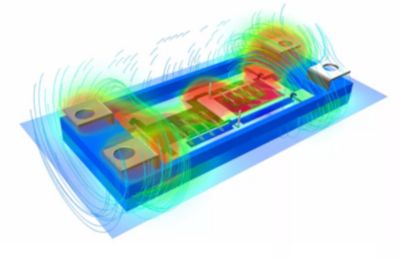-
United States -
United Kingdom -
India -
France -
Deutschland -
Italia -
日本 -
대한민국 -
中国 -
台灣
-
-
产品组合
查看所有产品Ansys致力于通过向学生提供免费的仿真工程软件来助力他们获得成功。
-
ANSYS BLOG
October 1, 2021
Study Electromagnetics Simulation Online with UPM and Ansys
Students and career engineers looking to broaden their skillset can now study electromagnetics simulation at The Technical University of Madrid (UPM) with the expansion of its online master’s degree program, Numerical Simulation in Engineering with Ansys.
The online program has been a successful collaboration for UPM and Ansys, enrolling more than 1,900 students since its inception in 2014. Depending on interest or specialty, students can choose a focus in solid mechanics, fluid mechanics, or fluid-structure interaction. Students now have another choice with UPM’s addition of an electromagnetics expert degree.
Advantages of Course Concentration in Electronics
“The latest trends in electronics require an in-depth understanding of electromagnetic phenomena to build highly efficient and compact power systems, as the operating frequencies are increasing to MHz range,” says Miroslav Vasic, a professor and coordinator of electromagnetic courses at UPM.
FEM simulation of the power losses inside the windings of a power electronics inductor.
“Effects like air gap fringing, proximity effect, or skin effect cannot be neglected in modern designs, and it is necessary to have a strong knowledge and experience to successfully resolve the challenges that we see in our day-to-day tasks. Therefore, employment of powerful FEM (finite element method) tools is a must for new engineers and our collaboration is a natural extension of the formation process for our students.”
UPM Electronics Program Highlights
Program extension not only provides students with an opportunity to broaden their electronics skillset, but it addresses industry needs to have more engineers trained in electronics simulation in the workforce. UPM’s electronics curriculum will provide a theoretical and practical foundation that enables engineers to apply Ansys tools in their daily activities successfully.
The collaboration bridges any potential academia-to-workforce gaps by providing expert Ansys users as adjunct professors to teach alongside UPM professors and support curriculum development with real-world examples.
The latest curriculum offering focuses on electrical power conversion, including transformers, motors, actuators, and phenomena related to power engineering. Among other phenomena, students will explore electromagnetic mechanisms, which currently create snags for high-frequency magnetic components used in electric vehicles (EV), EV chargers, and applications related to renewable energy.
“The problem that this course is resolving is that it offers a great visualization of the concepts that are relatively simple and commonly accepted by the students, but that cannot be quantified easily due to its numerical complexity or due to the lack of closed form solutions,” Vasic adds. “I would not say that there is a lack of FEM tools. There is a lack of understanding and experience, and that’s exactly what we would like to cover.”
FEM simulation of the magnetic field inside a power module.
As a technical director and coordinator of electromagnetic courses at Ansys, Devin Crawford agrees.
“There are numerous subtleties that are essential for engineers to understand when applying simulation,” says Crawford. “While topics may at first glance seem complicated, they are in fact straightforward if engineers have the proper background. Topics such as boundary conditions, external interfaces or even basic computer engineering concepts are essential building blocks for leveraging simulation.”
Crawford adds that while practical laboratory measurement has been a staple in engineering curriculum, simulation has not received the same attention. Together, UPM and Ansys are striving to change that.
Overall, UPM electronics students can expect to take a deep dive into electromagnetism, gain hands-on experience with FEM tools and simulation, and understand how basic concepts of electromagnetism are used in industry applications.
This semester, electronics class begins October 4 with enrollment remaining open through October 10. Next semester, class begins February 28, 2022, with enrollment open November 15 through March 6, 2022.
To learn more about the degree program visit Online Master’s Degree in Numerical Simulation in Engineering with Ansys.












